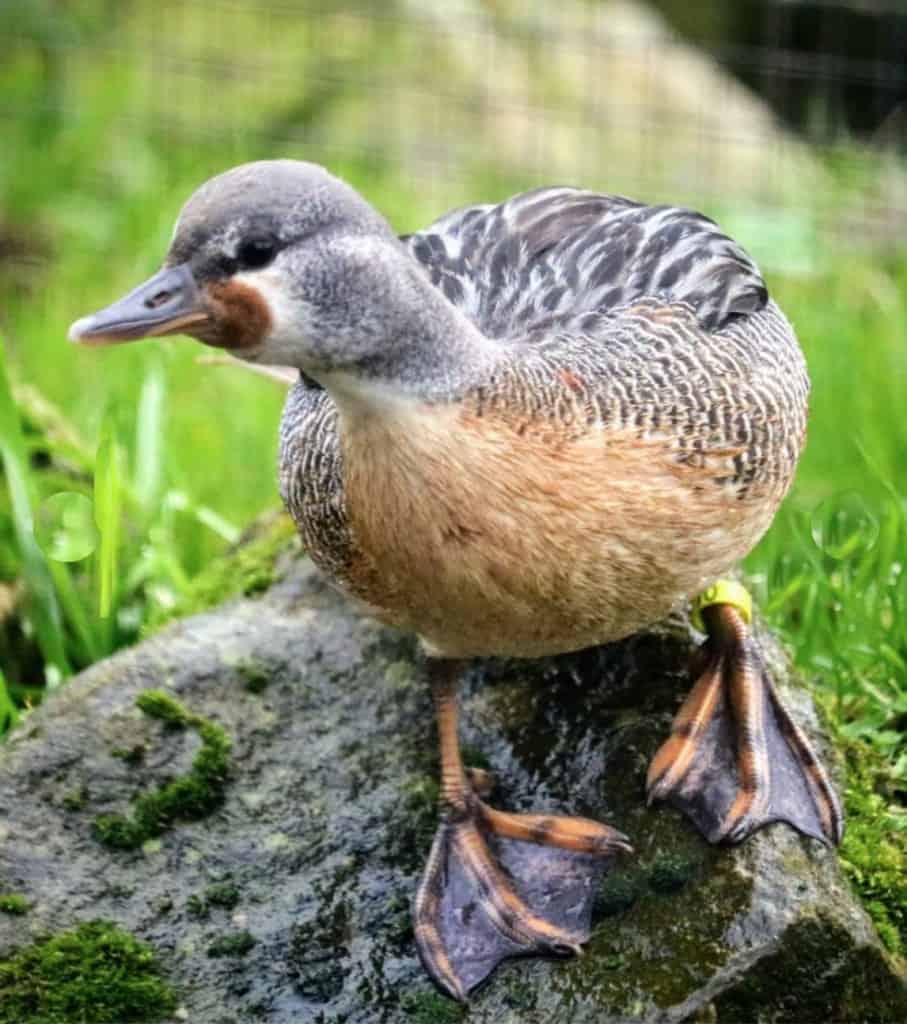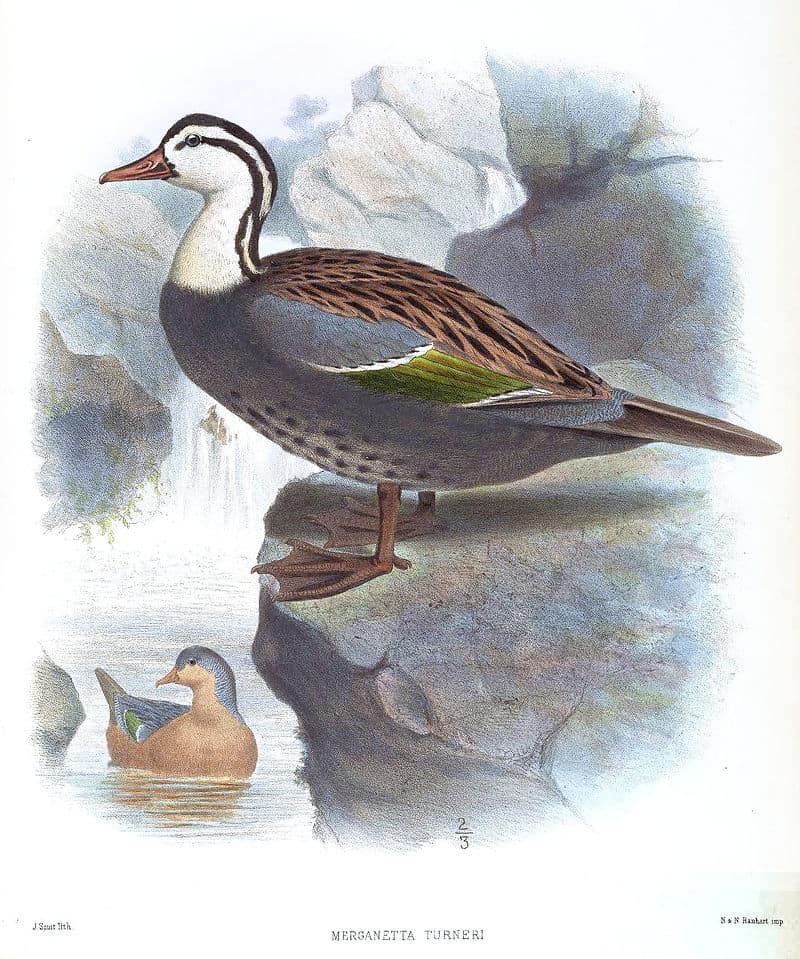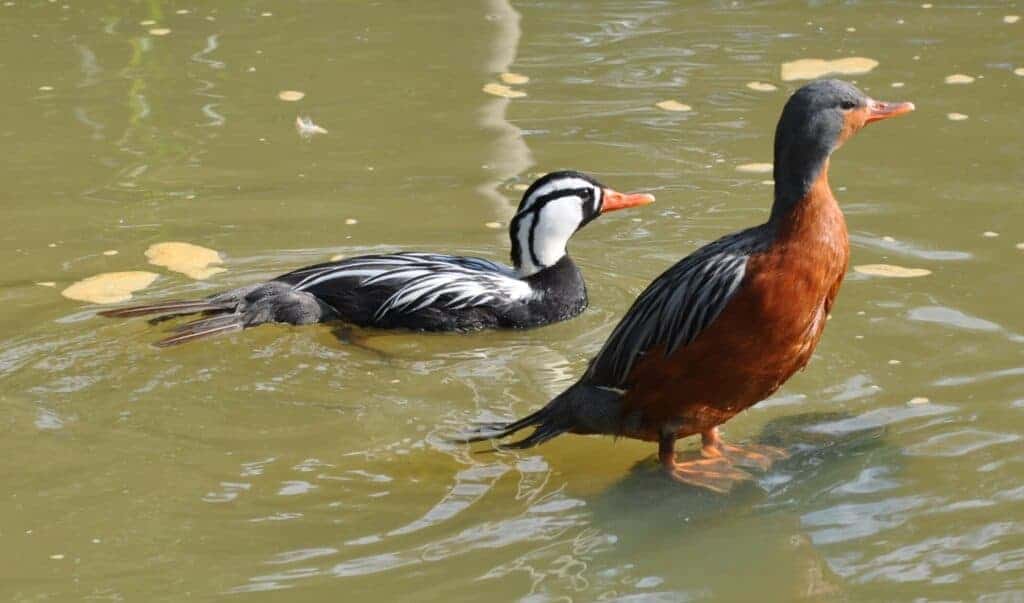Torrent Duck

There are six subspecies of Torrent Duck recognised:
- Columbian M. a. colombiana
- Peruvian M. a. leucogenis
- Turner’s M. a. turneri
- Garlepp’s M. a. garleppi
- Berlepsch’s M. a. berlepschi
- Chilean M. a. armata
In parts of their range, birds of different subspecies can be seen on the same river.


Merganetta armata
Few ducks are better named than this: the Torrent Duck is a fast-water specialist, found only on the fast-flowing, turbulent rivers that spill down from the Andes. Strikingly plumaged and torpedo-shaped, they are perfectly adapted to life in their unforgiving habitat. Their long, stiff tail feathers and large webbed feet enable them to stand securely on slippery rocks and to swim with apparent ease in the rapids of the mountain streams and rivers. Their diet is as specialised as the birds themselves, for they feed almost exclusively on insect larvae, and particularly that of caddis flies.

Though they have an extensive range — the whole length of the Andes, from Colombia to Tierra del Fuego, and from 14,000ft to sea level — they are never numerous, with each pair occupying its own exclusive stretch of river.

These ducks have rarely been kept in captivity, but will do well if kept in spacious aviaries with clear running water and plenty of part-submerged rocks. They will eat standard waterfowl pellets, supplemented by mealworms.

Torrent Ducks lay small clutches, numbering just three or four large eggs, and the incubation period (solely by the female) is the longest of any of the wildfowl — 43–44 days. The boldly striped ducklings can swim in torrents with their parents soon after hatching.
Share this page